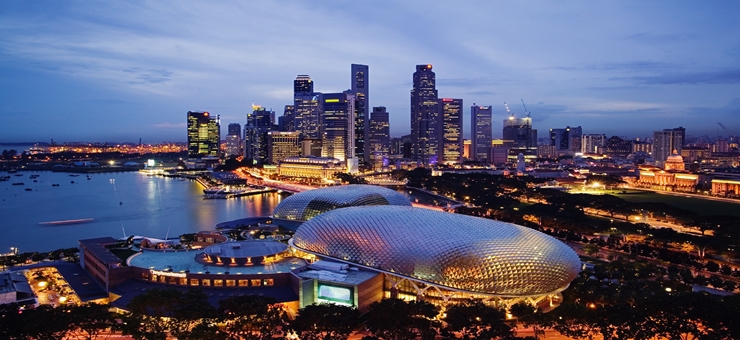
From a small fishing village to the business hub of South-east Asia, Singapore’s multi-layered history is still visible today. British colonial rule in the 19th century and its status as a free port, meant cultures from all over Asia settled here. Come here to experience Asia concentrated – the country contains various colorful enclaves, with Little India, Chinatown and Kampong Glam making it feel like you’re walking between countries as you venture around the island.
Where cultures meetSingapore is a cultural microcosm, with Chinese, Indian and Malay heritage embedded all over the island. Take the MRT to Little India first thing, for a traditional Thali set and wander around Tekka Market. In the afternoon, travel to Chinatown – see temples lit up in full scarlet glory, the Buddha Tooth Relic Temple being a particularly impressive sight. In the evening, head to the Malay district, Kampong Glam; wander around the traditional shop houses and walk in reverence next to the Sultan Mosque. Then, stop at a street side café for a glass of teh tarik, a milky, frothy tea before soaking up the atmosphere as people smoke shisha and take to the bars and restaurants.
Make time to makan
You should allow yourself ample time to explore Singapore’s food scene. The best way to sample the breadth of the food here is to head to a hawker centre. These food courts are lined with stalls serving all kinds of treats, with tables and chairs in the center. Maxwell Food Centre is a worthy contender; with Tian Tian Hainanese Chicken Rice one of the best loved stalls in Singapore. It’s not just the traditional food that is of the highest quality though; Singapore hosts some of the best restaurants in Asia. Visit the Marina Bay Sands complex to try Waku Ghin, a contemporary Japanese and European fusion restaurant.
Mall hopping
While every district of Singapore seems to have its own mall, the best area to shop in is the infamous Orchard Road. Visit ION Orchard for designer brands, or 313@Somerset for mid-range high street retailers. Shopping centers like the Far East Plaza cater for a younger crowd, filled with small units of independent shops and tattoo parlors. If you tire of malls, visit one of Singapore’s markets, the largest of its kind being Bugis Street Market in Kampong Glam. Alternatively, visit a district filled with independent shops and boutiques, like Haji Lane, Holland Village and the Club Street area.
A melting pot of architecture
Singapore bridges the old and the new in fascinating ways, and this is most apparent in its architectural makeup. A tour of the architecture of this city-state should center on the riverside districts. It’s here where the city first grew from, and where contemporary city planners have returned to develop. As a result, pale colonial buildings stand sturdily next to colorful restored shophouses and innovative modern architecture. Walk a little further afield too, and you can find intricately ornate Hindu temples, scarlet hued Buddhist temples and the curvy tops of cream-colored mosques.
Plan your escape
While Singapore has changed immeasurably from its humble beginnings, there are still areas left untouched dotted around the island. Bukit Timah Nature Reserve is one of many fragments of Singapore’s primary rainforest. Hike or cycle around the reserve to spot monkeys and anteaters. Alternatively, take a boat to nearby islands like Kusu. You’re likely to be the only ones there during the week, and next to the ocean are warm swimming lagoons which you’ll find completely deserted. Come at the weekend however, and it’s full of boats and with no restaurants, cafes or shade you’ll need to come prepared! You could also, visit Pulau Ubin, Singapore’s last remaining kampong, or village - built upon with only wooden houses, it’s a great place to hire a bike and cycle around and see some marine life, while soaking up the laidback atmosphere.